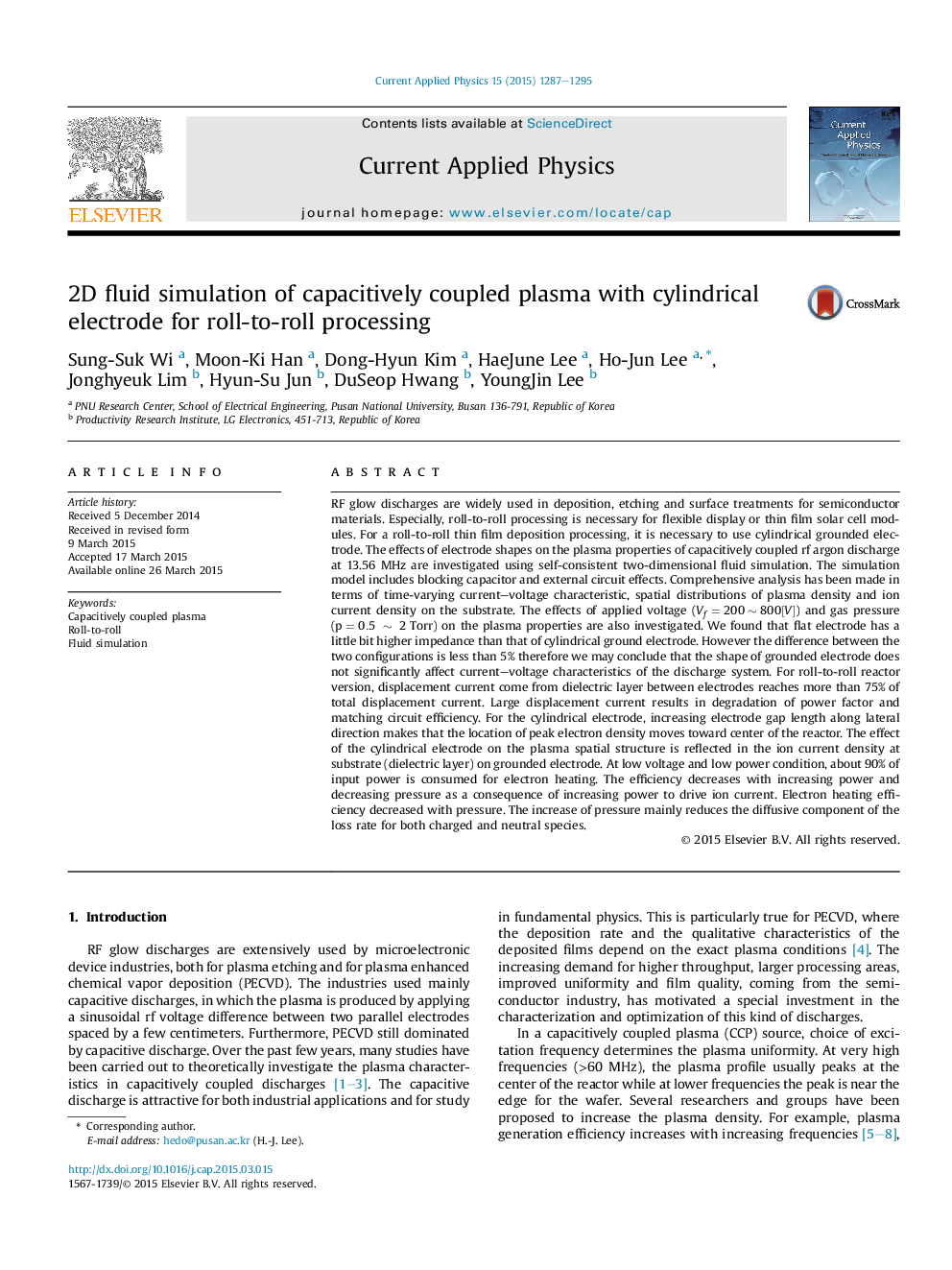| Article ID | Journal | Published Year | Pages | File Type |
|---|---|---|---|---|
| 1785387 | Current Applied Physics | 2015 | 9 Pages |
Abstract
RF glow discharges are widely used in deposition, etching and surface treatments for semiconductor materials. Especially, roll-to-roll processing is necessary for flexible display or thin film solar cell modules. For a roll-to-roll thin film deposition processing, it is necessary to use cylindrical grounded electrode. The effects of electrode shapes on the plasma properties of capacitively coupled rf argon discharge at 13.56Â MHz are investigated using self-consistent two-dimensional fluid simulation. The simulation model includes blocking capacitor and external circuit effects. Comprehensive analysis has been made in terms of time-varying current-voltage characteristic, spatial distributions of plasma density and ion current density on the substrate. The effects of applied voltage (Vf=200â¼800[V]) and gas pressure (p=0.5â¼2Â Torr) on the plasma properties are also investigated. We found that flat electrode has a little bit higher impedance than that of cylindrical ground electrode. However the difference between the two configurations is less than 5% therefore we may conclude that the shape of grounded electrode does not significantly affect current-voltage characteristics of the discharge system. For roll-to-roll reactor version, displacement current come from dielectric layer between electrodes reaches more than 75% of total displacement current. Large displacement current results in degradation of power factor and matching circuit efficiency. For the cylindrical electrode, increasing electrode gap length along lateral direction makes that the location of peak electron density moves toward center of the reactor. The effect of the cylindrical electrode on the plasma spatial structure is reflected in the ion current density at substrate (dielectric layer) on grounded electrode. At low voltage and low power condition, about 90% of input power is consumed for electron heating. The efficiency decreases with increasing power and decreasing pressure as a consequence of increasing power to drive ion current. Electron heating efficiency decreased with pressure. The increase of pressure mainly reduces the diffusive component of the loss rate for both charged and neutral species.
Related Topics
Physical Sciences and Engineering
Physics and Astronomy
Condensed Matter Physics
Authors
Sung-Suk Wi, Moon-Ki Han, Dong-Hyun Kim, HaeJune Lee, Ho-Jun Lee, Jonghyeuk Lim, Hyun-Su Jun, DuSeop Hwang, YoungJin Lee,
